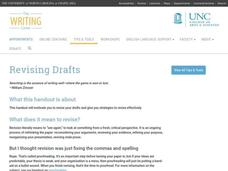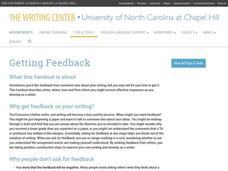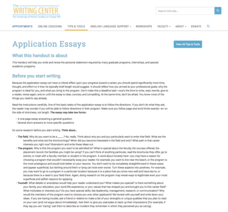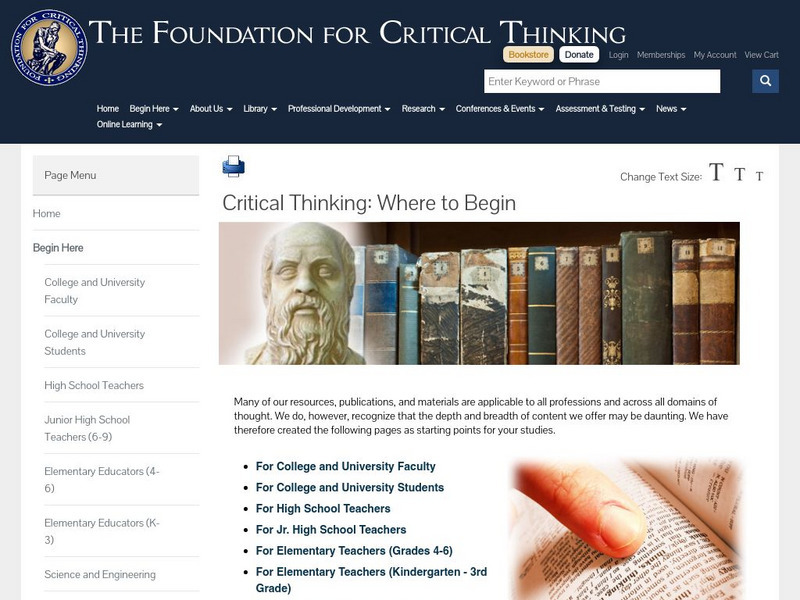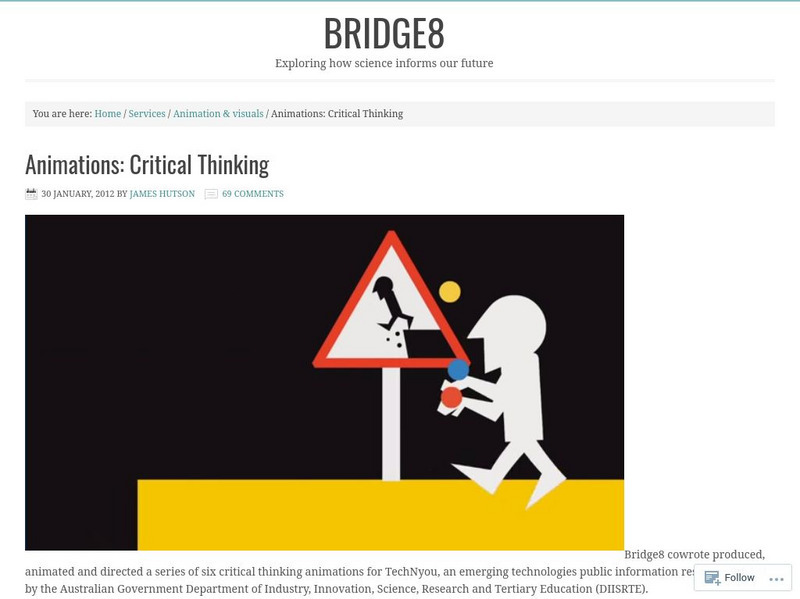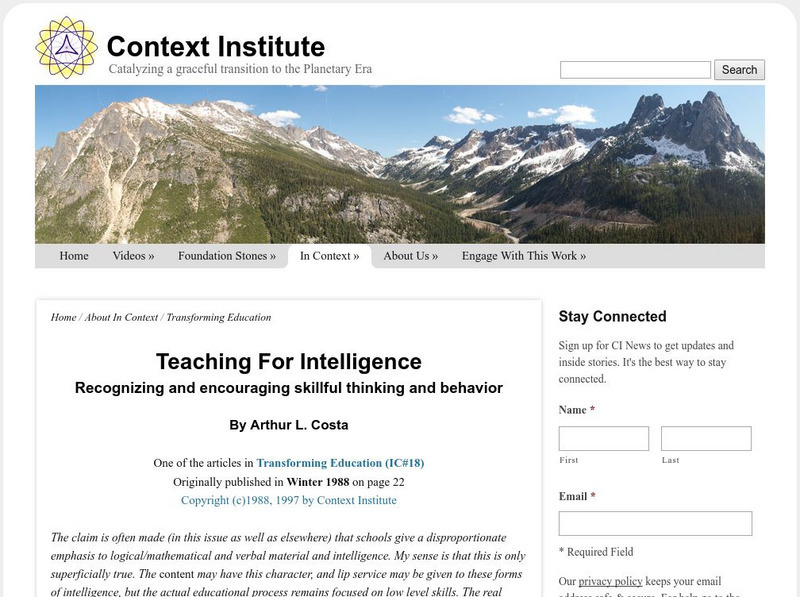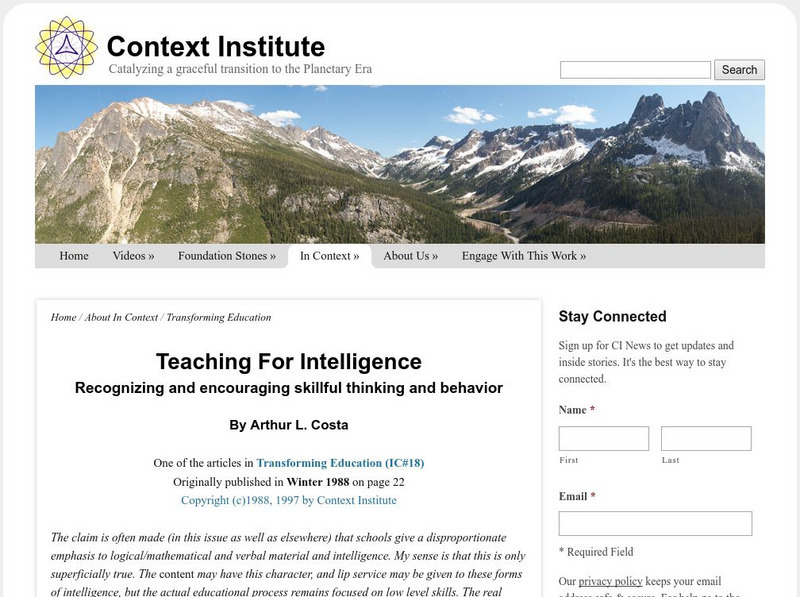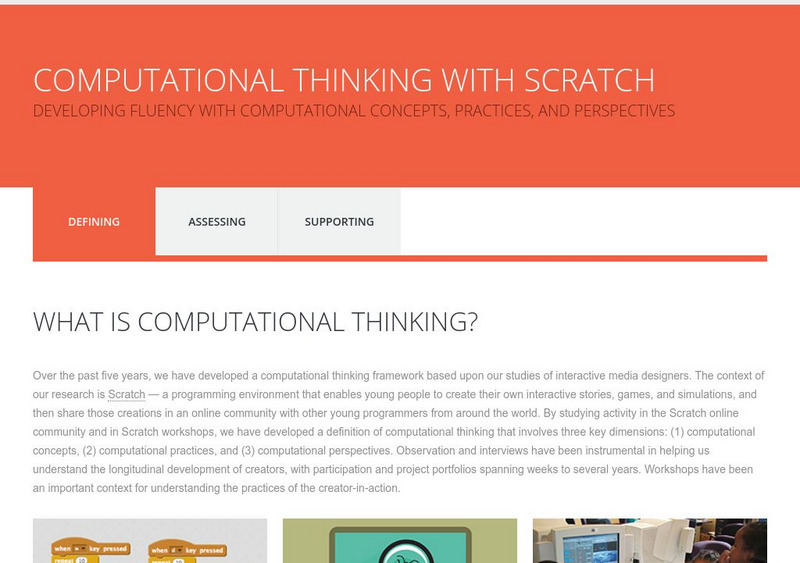University of North Carolina
Brainstorming
Did you just hear thunder? Nope, you heard the sound of another kind of storm—a brainstorm! A handout teaches writers about different kinds of brainstorming and provides options for them to try when beginning to write their own papers....
New York City Department of Education
Project Based Learning
After reviewing the information included in this resource, you will be an expert in both the definition of project-based learning and how to implement it with your class. Discover and explore thorough explanations, detailed...
University of North Carolina
Argument
What elements make up a successful argument? A helpful resource describes aspects of an argument such as the claim, evidence, counterargument, and audience. Perfect as an individual assignment for a flipped lesson or collaborative work,...
University of North Carolina
Annotated Bibliographies
When researchers write a paper, they become curators of information. It's their job to determine the best sources of information on a topic and use those sources to inform their writing. As part of a larger series, a handout on annotated...
University of North Carolina
Scientific Reports
IMRAD isn't text-speak for I'm cool. It's actually the format for scientific reports. As part of a larger series on specific writing assignments, an informative handout explains the nuts and bolts of writing a lab report. First, however,...
University of North Carolina
Revising Drafts
Don't simply proofread ... revise instead! Revising drafts is the topic of the 17th handout in UNC's Writing the Paper series of 24 lessons. Writers discover the importance of revision, as well as steps to follow during the process.
University of North Carolina
Getting Feedback
As many writers know, you are your own worst editor. The 10th installment in the Writing the Paper series explains that getting feedback from others is crucial to the writing process. The handout highlights the best time to ask others to...
University of North Carolina
Qualifiers
A lot of writers really struggle very much with adding a lot of qualifiers and intensifiers in their writing. Part of a larger series to improve writing skills, a handout on the topic provides tips to help reduce a reliance on these...
University of North Carolina
Essay Exams
For decades, the sight of blue books has struck fear in the hearts of collegians. Those books usually signal an essay exam, the topic of one of the handouts in a larger series on specific writing assignments. Using the handout, writers...
University of North Carolina
Application Essays
There's a lot riding on good writing! Often, an application essay is the difference between acceptance and rejection. As part of a series on specific writing assignments and contexts, a handout helps scholars craft the perfect personal...
Other
Criticalthinking.org: Develop Critical Thinking Skills
This site provides a wealth of material tailored to the needs of primary and secondary educators interested in developing their own critical thinking skills and those of their students. Content includes numerous articles focused on the...
Other
P21: Critical Thinking and Problem Solving
Learn about the concepts of effective reasoning and critical thinking skills as taught to students.
Other
Bridge8: Animations: Critical Thinking
A series of six short animated videos teaching critical thinking skills. Each video is about 2 minutes. Comments area at the bottom of the page.
Other
The Critical Thinking Community: Index of Articles
Listed here is a wealth of information and articles all pertaining to the idea of critical thinking. Much of the information here can be useful in understanding what critical thinking is and how to apply it to your classroom.
Other
Foundation for Critical Thinking: Elemental Structure for Analytical Thinking
Dissect the eight elements identified which make up the human thought process. Everyone thinks and everyone follows this course to produce thoughts.
Other
Teaching for Intelligence: Recognizing and Encouraging Skillful Thinking
Teaching students how to think is an important task for any educator. This well written and informative article lists 12 characteristics of intelligent behaviors that can help you understand how to teach skillful thinking to your students.
Other
Teaching for Intelligence: Recognizing and Encouraging Skillful Thinking
Teaching students how to think is an important task for any educator. This well written and informative article lists 12 characteristics of intelligent behaviors that can help you understand how to teach skillful thinking to your students.
Harvard University
Scratch Ed: Computational Thinking With Scratch: What Is Computational Thinking?
A Computational Thinking curriculum guide which develops fluency with computational concepts, practices and perspectives.
Other
Thinking Skills in Education: Methods to Improve Problem Solving
Containing many resources for further reading about thinking skills, this site provides a lot of good information about how to improve problem solving.
Other
Critical and Creative Thinking Bloom's Taxonomy
A simple site that gives concise definitions to critical thinking and creative thinking. Included are links to more resources about these thinking processes.
Annenberg Foundation
Annenberg Learner: America's History in the Making: Museum Curator
As part of the larger unit, America's History in the Making, from Annenberg Learner, this interactive allows students to be curators of their own mini-museum by choosing artifacts that fit a topic of their choice under the general theme...
Childnet
Childnet: Digiduck Stories
Engaging online safety stories for young children aged 3-7. The Digiduck collection has been created to help parents and teachers educate children aged 3 - 7 about online safety. The collection includes a ebooks, PDFs, a poster and an...
Mind Tools
Mind Tools: Creativity Tools: Develop Creative Solutions to Business Problems
20 techniques for solving problems in creative ways. Fantastic tool for teachers and leaders.
Other
Teach Net: Brain Binders
Brain binders are great teacher sources for problem solving and critical thinking with geometry. Students fold sheets of paper to create solid colors on each side. Various levels are included starting with two folds through five folds.





